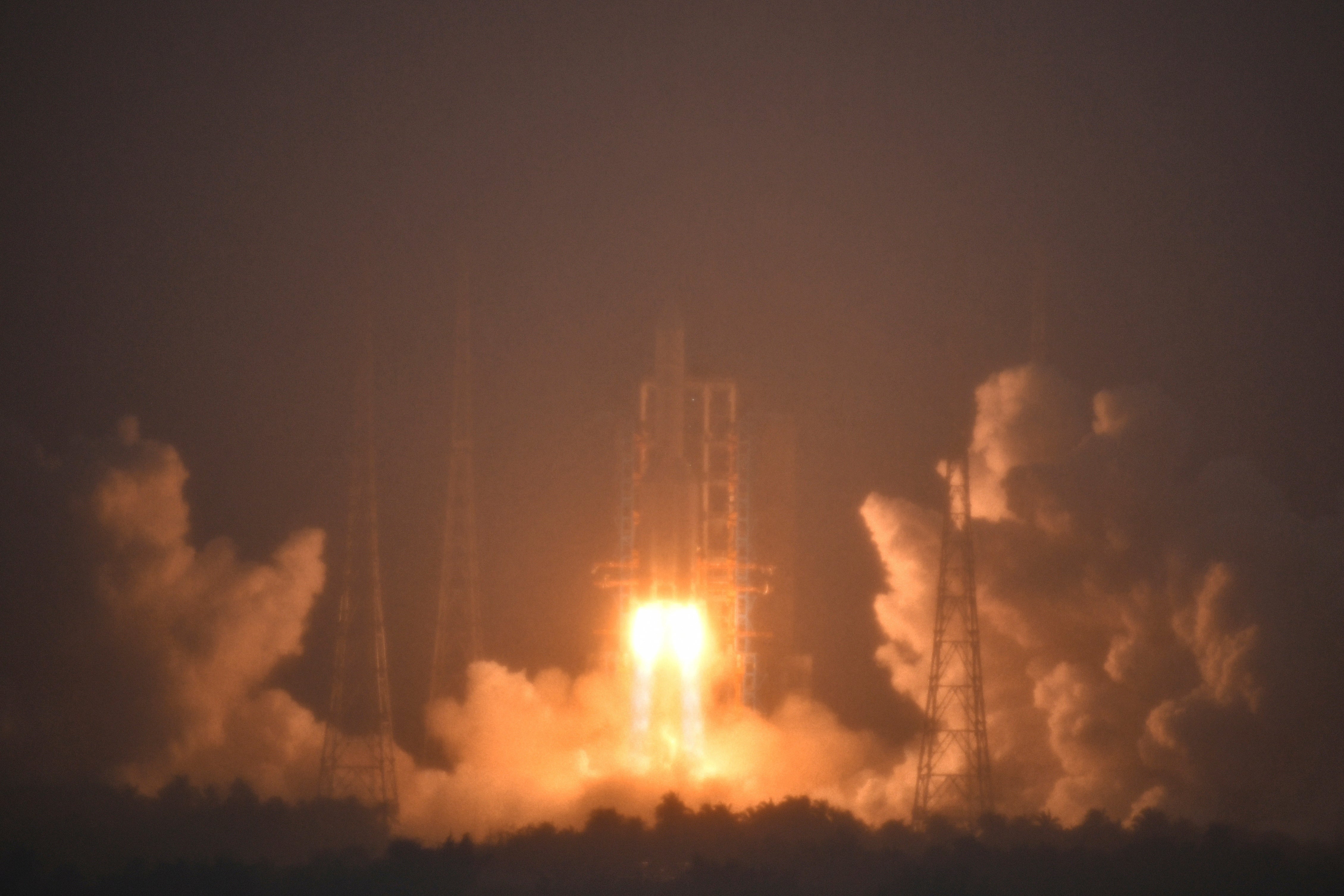A Chinese lunar probe returns to Earth with the world's first samples from the far side of the moon
China’s Chang’e 6 probe has returned on Earth with rock and soil samples from the little-explored far side of the moon in a global first

Your support helps us to tell the story
From reproductive rights to climate change to Big Tech, The Independent is on the ground when the story is developing. Whether it's investigating the financials of Elon Musk's pro-Trump PAC or producing our latest documentary, 'The A Word', which shines a light on the American women fighting for reproductive rights, we know how important it is to parse out the facts from the messaging.
At such a critical moment in US history, we need reporters on the ground. Your donation allows us to keep sending journalists to speak to both sides of the story.
The Independent is trusted by Americans across the entire political spectrum. And unlike many other quality news outlets, we choose not to lock Americans out of our reporting and analysis with paywalls. We believe quality journalism should be available to everyone, paid for by those who can afford it.
Your support makes all the difference.China's Chang'e 6 probe returned on Earth on Tuesday with rock and soil samples from the little-explored far side of the moon in a global first.
The probe landed in northern China on Tuesday afternoon in the Inner Mongolian region.
Chinese scientists anticipate the returned samples will include 2.5 million-year-old volcanic rock and other material that scientists hope will answer questions about geographic differences on the moon's two sides.
While past U.S. and Soviet missions have collected samples from the moon's near side, the Chinese mission was the first that has collected samples from the far side.
The near side is what is seen from Earth, and the far side faces outer space. The far side is also known to have mountains and impact craters, contrasting with the relatively flat expanses visible on the near side.
The probe left earth on May 3, and its journey lasted 53 days. The probe has drilled into the core and scooped rocks from the surface.
The samples “are expected to answer one of the most fundamental scientific questions in lunar science research: what geologic activity is responsible for the differences between the two sides?” said Zongyu Yue, a geologist at the Chinese Academy of Sciences, in a statement issued in the Innovation Monday, a journal published in partnership with the Chinese Academcy of Sciences.
China in recent years has launched multiple successful missions to the moon, collecting samples from the moon’s near side with the Chang’e 5 probe previously.
They are also hoping that the probe will return with material that bear traces of meteorite strikes from the moon’s past.